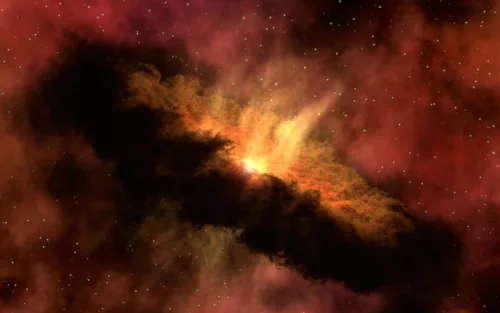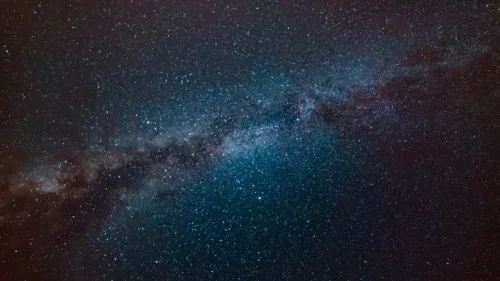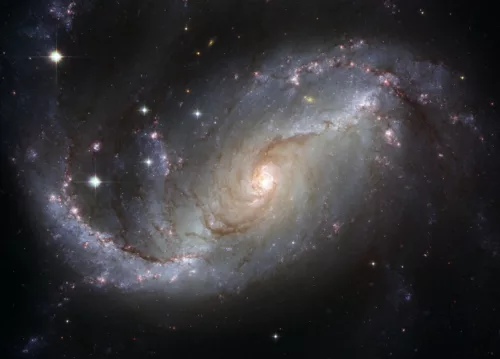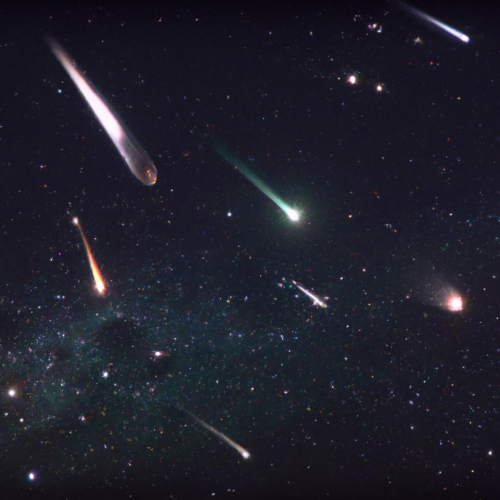If you’ve ever looked up at the night sky and found yourself in awe of the beauty and wonder that is a meteor shower, you’re not alone. These captivating celestial events have fascinated humans for centuries, inspiring myths and legends. But how exactly can you witness the magic of a meteor shower firsthand? In this article, we’re here to guide you through the process of observing transient events like meteor showers, offering tips and tricks to maximize your experience and ensure you don’t miss a single shooting star. So grab a cozy blanket, find a clear spot away from city lights, and let’s embark on an unforgettable stargazing adventure together.
Table of Contents
Understanding Meteor Showers
Meteor showers are spectacular celestial events that occur when the Earth passes through a trail of debris left behind by a comet or asteroid. These debris, also known as meteoroids, enter the Earth’s atmosphere and burn up, creating bright streaks of light in the sky.
What causes meteor showers?
Meteor showers are caused by the gravitational pull of a comet or asteroid as it orbits the Sun. Over time, these celestial bodies shed debris, creating a trail of particles in their path. When the Earth crosses paths with these debris trails, the particles enter the atmosphere and vaporize due to the intense heat generated by the friction with air molecules. This vaporization process produces the luminous streaks known as meteors.

When do meteor showers occur?
Meteor showers occur at specific times each year and can often be predicted with accuracy. Some meteor showers are annual events, like the Perseids in August, while others are more sporadic. The timing of meteor showers is often influenced by the position of the Earth in its orbit around the Sun and the location of the debris trail within the solar system.
Why are meteor showers named after constellations?
Meteor showers are named after the constellations from which they appear to originate. This apparent point of origin is called the radiant. For example, the Perseid meteor shower is named after the constellation Perseus. Naming meteor showers after constellations helps astronomers and enthusiasts easily identify the showers and locate their radiant points in the night sky.

How long do meteor showers last?
Meteor showers can last for several days or even weeks, although the peak activity usually occurs within a specific timeframe. During the peak, the number of meteors visible per hour can increase significantly. For example, the Perseid meteor shower typically peaks around mid-August and can offer a meteor rate of up to 100 meteors per hour.
Preparing for Meteor Shower Observations
Before embarking on your meteor shower observation journey, it is crucial to make appropriate preparations to maximize your chances of observing this awe-inspiring phenomenon.
Researching upcoming meteor showers
Stay informed about upcoming meteor showers by referring to reliable sources such as astronomy websites, books, or apps. These resources provide information about the dates, peak times, and expected meteor rates for various showers throughout the year.
Checking the weather conditions
Keep a close eye on the weather forecast for your chosen observing location. Clear skies are essential for meteor observation, as clouds can obstruct your view and diminish the visibility of meteors. Choose a night with a clear weather forecast to increase your chances of witnessing a stunning meteor shower.
Finding a suitable observing location
Selecting the right observing location is crucial to ensure a successful meteor shower experience. Ideally, choose a spot away from city lights and light pollution. Rural areas or dark sky reserves offer optimal conditions for observing meteors, as they provide a darker and clearer night sky.
Selecting the right equipment
For most meteor showers, all you need is your naked eye. However, if you wish to enhance your experience, consider using binoculars or a telescope. Binoculars can provide a closer look at individual meteors, while a telescope allows for detailed observations of larger fireballs or bolides.
Gathering essentials for a comfortable experience
Prepare for a comfortable and enjoyable observation session by bringing along various essentials. Dress warmly, as night-time temperatures can drop significantly. Bring a comfortable chair or blanket to sit or lie down on, as you may be observing for extended periods. Additionally, pack snacks, beverages, and perhaps even a thermos of hot chocolate or coffee to keep you refreshed throughout the night.

Understanding Meteor Shower Radiants
To make the most of your meteor shower observation experience, it is important to understand the concept of the radiant and its impact on meteor visibility.
What is a meteor shower radiant?
The radiant refers to the point in the sky from which the meteors within a particular shower appear to originate. It is not a physical object but rather an apparent point due to the perspective of the observer. During a meteor shower, it is helpful to locate the radiant, as this is where the highest concentration of meteors will occur.
How to locate the radiant point?
Locating the radiant of a meteor shower involves identifying the associated constellation and finding its position in the night sky. Astronomical resources such as star charts, astronomy apps, or online tools can help you determine the location of the radiant. Once you have found the constellation, the radiant point will typically be near one of its prominent stars.
Why is the radiant important for observation?
Knowing the location of the radiant is crucial for meteor shower observations because it allows you to direct your gaze towards the area where the most meteors will appear. By facing the radiant, you increase the chances of witnessing more meteors and potentially capturing some of the shower’s more impressive fireballs.
How does the radiant affect meteor visibility?
Meteors from a meteor shower can appear anywhere in the sky, but their paths will all trace back to the radiant point. The farther away from the radiant you look, the shorter the meteors’ trails will be. Conversely, when you gaze directly towards the radiant, the meteors will appear longer and more prominent as they travel through the Earth’s atmosphere. Observing in the vicinity of the radiant maximizes the distance traveled by the meteors and amplifies their aesthetic impact.
Observing Techniques
There are various observation techniques you can employ to enhance your experience of meteor showers.
Naked-eye observation
The simplest and most accessible method of observing meteor showers is with the naked eye. Find a comfortable position where you have an unobstructed view of the sky, away from lights and light pollution. Allow your eyes to adapt to the darkness by avoiding exposure to bright light sources. Patience is key, as meteors may appear sporadically, and it can take time for your eyes to adjust and for the shower to reach its peak activity.
Using binoculars for observing meteor showers
Binoculars can be a valuable tool for observing meteor showers, especially when you want to see more faint meteors or appreciate the details of larger fireballs. To use binoculars effectively, keep them handy and use them when you spot a meteor that catches your attention. Binoculars with a wide field of view are ideal for capturing the full trail of a meteor, while higher magnification binoculars can provide a closer look at individual meteors.
Telescopic observations
While not necessary for observing meteor showers, telescopes can offer unique perspectives on larger fireballs or bolides. Set your telescope to a low magnification and wide field of view to capture the full trail of a meteor. However, it’s important to note that meteors typically move too quickly for telescopic tracking, so utilizing a telescope during meteor showers may not be as fruitful as other methods.
Photographing meteor showers
Capturing the beauty of meteor showers through photography can be a rewarding and visually stunning endeavor. To photograph meteors, use a camera with manual settings that allow for long exposures. Mount the camera on a sturdy tripod, aim it towards the radiant or an open area of the sky, and set the exposure time to several seconds or longer. Experiment with different exposure lengths to achieve the desired effect.
Recording observations using notebooks or apps
Keeping records of your meteor observations is not only a way to document your experiences but can also provide valuable data for scientific purposes. Notebooks or observation logs allow you to keep track of the date, time, duration, and characteristics of observed meteors. Additionally, there are smartphone apps available that can automatically log and record meteor shower observations, making it easier to contribute data to scientific databases.

Best Practices for Meteor Shower Observations
By following these best practices, you can ensure a more fruitful and enjoyable meteor shower observation session.
Choosing the optimal observing time
To maximize your chances of witnessing a meteor shower, plan your observation session during the shower’s peak activity period. Consult reliable sources to determine the specific date and time of the peak, and try to observe on a night as close to the peak as possible. Meteor showers are typically more active after midnight, so consider staying up late or waking up early to catch the highest meteor rates.
Allowing your eyes to adapt to the darkness
It takes time for your eyes to adjust fully to the darkness, allowing you to see fainter meteors. Minimize exposure to bright lights before and during your observation session to preserve your night vision. Give yourself at least 20-30 minutes for your eyes to adapt fully to the low-light conditions.
Minimizing light pollution
Light pollution from artificial sources can hinder your ability to see meteors clearly. Choose an observing location away from city lights and other sources of light pollution. If you’re in an urban area, position yourself in a spot shielded from streetlights or use light pollution reduction filters to help darken the sky.
Using star charts and apps for identification
Familiarize yourself with the night sky by using star charts or smartphone apps that help identify constellations. These resources can assist in locating the radiant point and provide additional context about the stars and celestial objects visible during your observation session. Understanding the sky’s layout enhances your overall meteor shower experience.
Being patient and maintaining focus
Meteor showers can have moments of intense activity followed by lulls. Therefore, it is essential to remain patient and maintain focus. Keep your attention on the sky, even during periods of apparent inactivity, as meteors can streak across the sky at unexpected intervals. Patience and attentiveness will be rewarded with breathtaking displays of cosmic fireworks.
Tips for Maximizing Meteor Shower Viewing
To optimize your meteor shower viewing experience, consider implementing these helpful tips:
Finding a comfortable observing position
Meteors can appear anywhere in the sky, so find a comfortable position that allows you to view a large expanse overhead without straining your neck. Consider using a reclining lawn chair or lying on a blanket to minimize discomfort during long observation sessions.
Using peripheral vision to catch more meteors
Instead of focusing solely on one area of the sky, use your peripheral vision to expand your field of view. Meteors can streak across the sky quickly, and by utilizing your peripheral vision, you increase your chances of catching these fleeting streaks of light.
Avoiding unnecessary movement
Minimize unnecessary movement during your observation session to minimize disruption and increase your chances of spotting more meteors. Sudden movements can catch your eye’s attention and cause you to miss meteors streaking across the sky. Stay still and allow the meteors to reveal themselves to you.
Taking breaks to rest your eyes
Observing meteor showers can be an intense visual experience and may cause eye strain over time. Take short breaks to rest your eyes, allowing them to recover and maintain their sensitivity to fainter meteors. This also provides an opportunity to stretch, rejuvenate, and appreciate the overall ambiance of the night sky.
Observing with friends or in group activities
Meteor showers are an excellent opportunity for bonding and shared experiences. Invite friends or join organized group activities focused on meteor observation. Together, you can enjoy the excitement of spotting meteors, share stories, and create lasting memories. Additionally, observing with others increases the chances of witnessing more meteors, as a group can collectively spot meteors appearing from different angles.

Safety Considerations
While observing meteor showers is generally safe, it is essential to consider a few safety precautions to ensure a secure and enjoyable experience.
Protecting your eyes during observations
Although meteors are relatively harmless, it is important to protect your eyes during observations. Avoid directly looking at bright light sources such as the Moon or nearby artificial lights, as they can cause discomfort and temporarily impair your night vision. If using binoculars or a telescope, make sure to use appropriate filters to protect your eyes from intense sunlight or other bright light sources.
Avoiding potential hazards in the observing area
Before settling on an observing location, survey the area for any potential hazards such as uneven terrain, trip hazards, or obstructing objects. Ensure that your chosen location is free from overhead branches or obstacles that may pose a risk during low-light conditions. Take precautions to avoid accidental falls or injuries while navigating through the observation area.
Staying vigilant during night-time activities
Observing meteor showers often takes place at night, which can present different safety considerations compared to daytime outdoor activities. Be aware of your surroundings and pay attention to any changes in weather conditions. Take steps to ensure personal safety, such as dressing appropriately for the prevailing temperatures, staying hydrated, and carrying a flashlight for navigating in the dark.
Understanding and managing weather-related risks
Weather can impact the visibility and safety of your meteor shower observation session. Be mindful of potential hazards such as lightning storms or adverse weather conditions that may pose risks. In case of inclement weather, prioritize your safety and seek shelter until conditions improve. Remember that there will always be more opportunities to observe meteor showers in the future.
Being aware of wildlife in the observing location
If observing meteor showers in natural environments, it is important to be mindful of wildlife. Some areas may be home to nocturnal animals or insects that can be attracted to your observation setup or potentially pose a nuisance. Respect wildlife habitats and do not disturb or harm any animals encountered during your meteor shower observations.
Post-Observation Analysis and Enjoyment
After your meteor shower observation session, take time to reflect, document your experiences, and engage with the meteor shower community.
Recording and documenting your observations
Capture the magic of your meteor shower experience by recording your observations and noting memorable moments. Create a dedicated journal or logbook to record details such as the date, time, and location of your observation, as well as the number, characteristics, and directions of observed meteors. Include any special events, like fireballs or meteor trains, and your overall impressions of the shower.
Sharing your experiences with fellow observers
Connect with fellow meteor shower enthusiasts and share your observations and experiences. Discussing meteor showers with others who have a similar passion can enhance your understanding of the phenomenon, provide valuable insights, and foster a sense of camaraderie. Participate in online forums or local astronomy clubs to engage in discussions or share photographs and stories from your meteor shower observations.
Engaging in online communities and forums
The internet offers a wealth of resources for meteor shower enthusiasts. Join online communities, social media groups, or forums dedicated to meteor shower observation to engage with like-minded individuals, exchange tips and techniques, and learn from experienced observers. These platforms can also be excellent sources of inspiration and a means to connect with experts in the field.
Exploring meteor shower research and historical data
Delve deeper into the science and history of meteor showers by exploring research papers, scientific publications, and historical records. Many astronomical organizations and research institutions publish informative articles and studies on meteor showers, detailing their origins, characteristics, and historical significance. This further knowledge can deepen your appreciation for these celestial events.
Finding inspiration in the beauty of the night sky
Ultimately, meteor shower observations serve not only as scientific pursuits but also as a source of inspiration and wonder. Take the time to absorb the beauty and grandeur of the night sky during your observation sessions. Marvel at the vastness of the universe, the streaking meteors, and the sheer magnitude of celestial bodies. Let the experience fill you with awe and inspire you to continue exploring the wonders of the universe.
Additional Resources
Expand your knowledge and enhance your meteor shower observation journey with these additional resources:
Recommended books and guides
Numerous books and guides provide in-depth information on meteor showers and astronomy in general. Consider titles such as “Meteor Showers and their Parent Comets” by Peter Jenniskens or “The Observer’s Guide to Astronomy Vol. 1: Meteors, Comets, and Planets” by Patrick Martinez, among many other insightful publications.
Websites and online tools for meteor shower tracking
Several websites and online tools offer meteor shower tracking and prediction services. Websites like the International Meteor Organization (IMO) and NASA’s Meteor Shower Calendar provide up-to-date information on upcoming meteor showers, including their estimated peak times and expected meteor rates. Additionally, apps such as SkySafari, Stellarium, or night sky apps can help you identify constellations and locate the radiant during your observation sessions.
Notable observatories and planetariums
Consider visiting or exploring the websites of renowned observatories and planetariums in your area or around the world. Institutions such as the Lowell Observatory in Arizona or the Griffith Observatory in Los Angeles offer educational programs, exhibitions, and stargazing events that can enhance your understanding and appreciation of meteor showers.
Professional organizations for amateur astronomers
Joining professional organizations for amateur astronomers can provide invaluable resources and networking opportunities. Organizations such as the International Meteor Organization (IMO) or the Astronomical League cater to amateur astronomers of all levels of expertise. By joining these communities, you gain access to publications, workshops, conferences, and collaborations with other passionate observers.
Citizen science projects related to meteor observations
Participating in citizen science projects related to meteor observations allows you to contribute to scientific research while deepening your understanding of meteor showers. Projects like the American Meteor Society’s Fireball Reporting or the NASA Meteor Counter provide platforms for amateurs to report and analyze meteor observations, contributing valuable data to ongoing research initiatives.
Conclusion
Meteor showers are celestial events that captivate and inspire individuals across the globe. By understanding the science behind meteor showers and employing appropriate observation techniques, anyone can immerse themselves in the captivating beauty of these cosmic displays. Whether observing with the naked eye or employing various tools, the thrill of witnessing meteors streak across the night sky is an unparalleled experience. Remember to always observe safely, be patient, and embrace the awe-inspiring wonders of the universe. It is through shared fascination and collective observations that meteor showers continue to engage, delight, and unite sky watchers worldwide.
